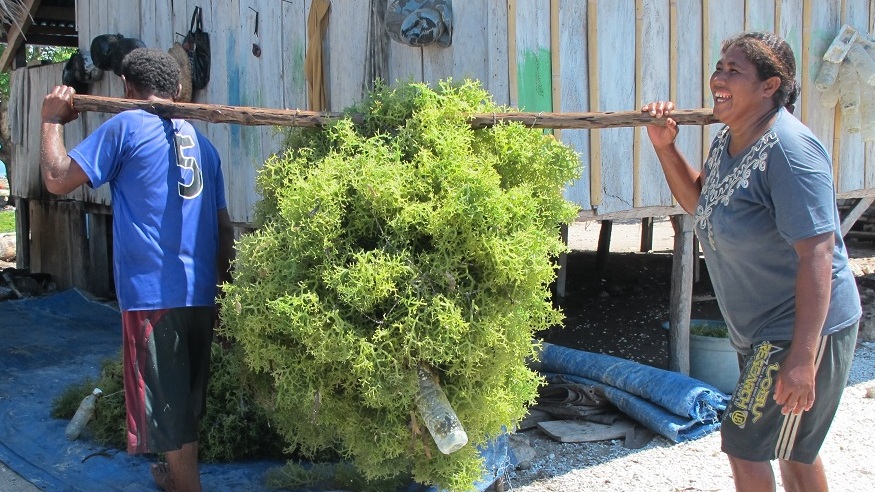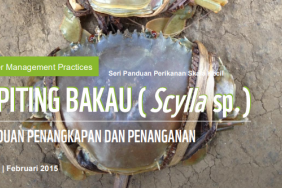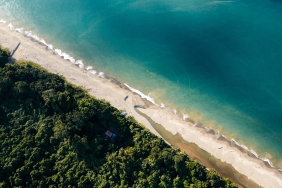TOGETHER MAINTAINING WATER QUALITY IS THE KEY TO THE PROGRESS OF SEAWEED CULTIVATION IN TAKALAR
By: Amriana, Local Facilitator of WWF-Indonesia Gracilaria Cultivation Improvement Program in Takalar, South Sulawesi
"The quality of pond water plays a major role in the success of Gracilaria seaweed cultivation," said Idham Malik (WWF-Indonesia) that afternoon (15/05), in front of fifteen pond farmers who are members of the Samaturu'e Group. The secretariat of this group of Gracilaria seaweed farmers in Soreang Village, Mappakasunggu Subdistrict, was the location where the pond training on the importance of maintaining water quality was held.
The Samaturu'e group is a group assisted by WWF-Indonesia and Celebes Seaweed Group (CSG) in Takalar Regency, South Sulawesi. The group's seaweed cultivation area reaches 20 hectares, with enormous potential. In one harvest cycle, they can produce up to 400 kg to 1 ton of seaweed.
However, the topography of the location causes the low volume of water entering the farmers' ponds. Thus, there are high fluctuations in water salinity. In fact, water quality is one of the factors that have an important role in the success of Gracilaria seaweed cultivation.
Therefore, as part of a series of cultivation improvement programs, we escorted the group to gradually have more insight into the best Gracilaria cultivation practices. One of them is through a series of initial trainings. Later, water quality measurements are taken every week to be used as evaluation material at the monthly group meetings.
Controlling water quality in aquaculture activities is necessary not only to prevent pest and disease attacks, but also to stimulate seaweed growth. Thus, the production quantity and quality of Gracilaria produced will be optimal.
Water quality in fisheries can be measured through three parameters, namely physical, chemical and biological parameters. Physical parameters are water conditions that can be measured through its form, such as water color, odor, temperature. Chemical parameters are water conditions that can only be measured using tools or by utilizing chemical compounds such as salinity, pH, nitrate, phosphate, dissolved oxygen. Meanwhile, biological parameters are related to water conditions that are influenced by microorganisms that live in water in the form of plankton density.
In this training, farmers were given an understanding of the importance of maintaining water quality conditions in Gracilaria cultivation activities. They learned first-hand how to measure the quality of water temperature and pH with a pH meter, as well as measuring salinity with a hand refractometer. These water quality parameters play a role in the growth of Gracilaria seaweed cultivated in ponds.
"Poor water quality can be fatal for seaweed," said Idham Malik. "The interaction between the host, pathogen and poor water quality will make cultured organisms susceptible to disease attack. For example, the growth of moss that becomes a pest for aquaculture," he continued.
Our big hope is that after this training, all Samaturu'e Group farmers will be more aware of paying attention to the quality of their pond water. Of course, so that Gracilaria production from Mappakasunggu can compete in the industry, by supplying the best cultivation results, which come from the quality of pond water that is maintained together by the farmers.





